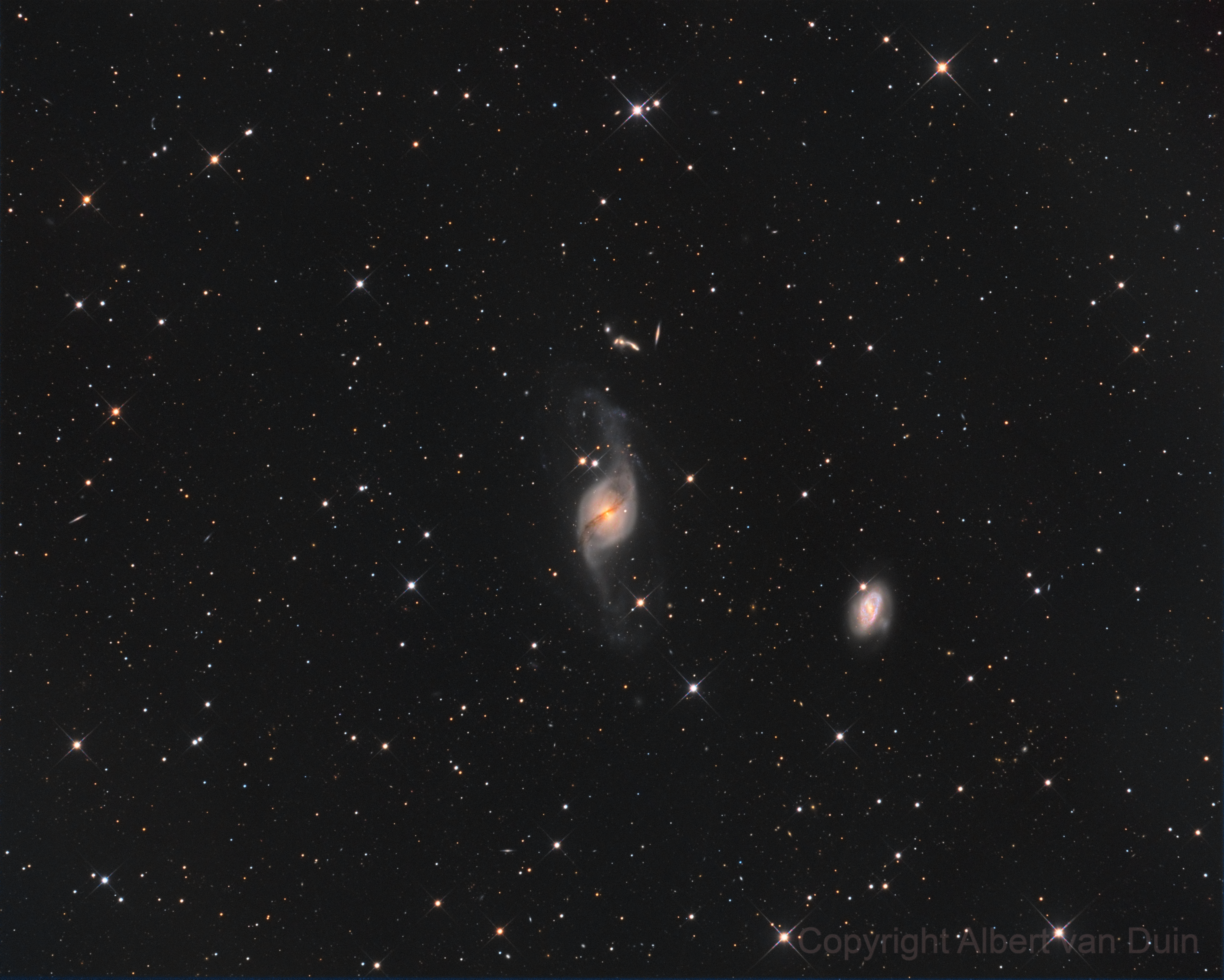Mesu-Mount 200 MKII
| The Mesu-Mount 200 MKII is the improved version of the original Mesu 200. With a stiffer construction, better cable managament, brake mechanism for both axises and (de)coupling mechanism for the two servo motors, it is an improvement on it's predecessor. The mount is based on a friction drive system which is very stiff and efficient, find more info here, driven by a Sidereal Technology servo controller I from Sidereal Technology (USA). |
Mount specifications
|
Drive system |
: |
Friction wheels driven by Servo motors |

De Mesu-Mount 200 MKII fitted with Berlebach tripod.
Something about PE (Periodic Error)
| The Mesu-Mount with a typical instrument setup is seeing limited for many minutes of open loop tracking (without optical feedback from the object). Measurements are done to demonstrate the Mesu-Mount periodic error over a long period of time under heavy load conditions in open sky conditions. As written in the DFM article more properties than PE are important for a telescope mount. The Smoothness of tracking is more important than the low frequency periodic error. This is because even a fairly large amplitude periodic error can be guided out using optical feedback (from a guide star) if the frequency is low. If the frequency is high you need expensive systems to guide it out. So it is desirable to have a smooth running mount that does not has high frequent tracking errors. Optical feedback from a celestial object is what is needed to expose a deep-sky object for a long time. A feedback from the mounts axis to make it rotate very constant will not be enough. This will cost a high resolution encoder to measure the rotation on arc second level and will not help to make a good deep-sky picture. Much better is to use auto guiding and use a celestial object as reference. Auto guiding can be done for a low price and needs to be done anyway also when the mount has a close loop control system on the RA axis. This is because there is variation in atmospheric conditions and flexure in the mechanical parts of the telescope. This factors are becoming more important when exposure times increase. This cannot be compensate by feedback from the mounts RA axis to the servo controller alone. Another property that defines the mounts quality is the stiffness. Typically telescope structures are stiffer than the drive stiffness, the drive system needs to either have inherent stiffness or develop stiffness through the servo motor controller. Any gear system require lubrication. The lubrication film between the gear teeth will significantly lower the stiffness. The Mesu-Mount is very stiff because it has no gear system that need a lubrication in the drive train. Furthermore is a high efficiency drive desirable. It requires less power and it allow the drive system to remove energy from the moving telescope setup. Removing energy allows faster deceleration and significantly improves telescope response to position changes. Worm gears with high gear ratio have very low efficiency and must be decelerate very slowly increasing the time required to respond to a position change command. |

| The Mesu-Mount MKII, when mounted on a bended knee pillar, has the ability to turn 360 degrees over the RA. This makes a meridian flip unnecessary. The mount can also be used on a normal tripod. For this, a wedge can be custom made for your latitude. This wegde can be set +- 2,5 degrees of the wedge's original latitude, which is about 250 km in north or south direction. The MKII has been made more user friendly with improved cable management and decoupling mechanism for both servo motors. Furthermore, the MKII has brakes that can lock both axises in every desirable position. Together with the maximum torque of 10 Nm makes balancing the mount an easy task. |
 |
| The Mesu-Mount MKII head |
 |  |
| The Berlebach tripod with wedge (left) and the deconstructed Mesu-Optics bended knee pillar. | |
|---|---|
| Price Mesu-Mount 200 MKII : €5600,00 (transport and VAT excluded) |
Image made with the Mesu-Mount 200MKII
 |
| NGC3718, NGC3729 and neighbours made with a 400mm F/4 Newtonian telescope. Total exposure time 13.7 hrs. Made by Albert van Duin in Drenthe, the Nederlands. |
